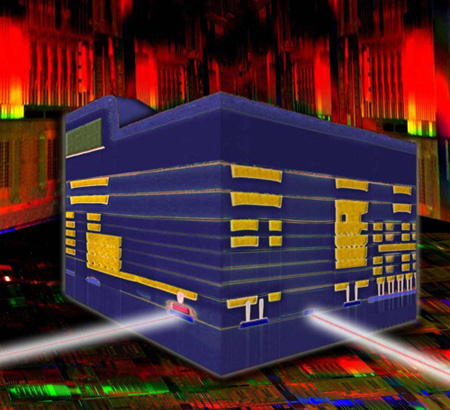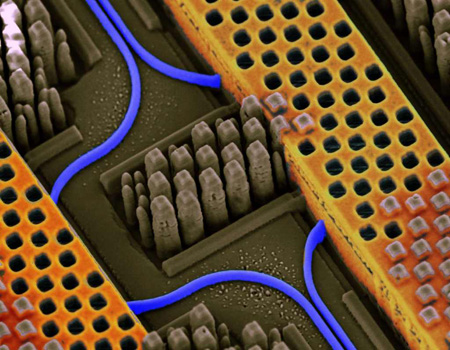
The technology breakthrough allows the integration of different optical components side-by-side with electrical circuits on a single silicon chip, for the first time, in standard 90nm semiconductor fabrication. The new features of the technology include a variety of silicon nanophotonics components, such as modulators, germanium photodetectors and ultra-compact wavelength-division multiplexers to be integrated with high-performance analog and digital CMOS circuitry.
The use of a standard chip manufacturing process will alleviate high cost of traditional interconnects. Single-chip optical communications transceivers can now be manufactured in a standard CMOS foundry, rather than assembled from multiple parts made with expensive compound semiconductor technology.
Furthermore, dense integration of optical circuits capable of transmitting and receiving at high data rates will solve the limitations of congested data traffic in current interconnects. IBM’s CMOS nanophotonics technology demonstrates transceivers to exceed the 25Gbps data rate. In addition, the technology is capable of feeding a number of parallel optical data streams into a single fiber by utilizing compact on-chip wavelength-division multiplexing devices. The ability to multiplex large data streams at high data rates will allow future scaling of optical communications capable of delivering terabytes of data between distant parts of computer systems.

In summary:
- Technology Breakthrough Demonstrates Feasibility of Silicon Nanophotonics for Chip Manufacturing
- Light Pulses Can Move Data at Blazing Speeds to Help Solve Bandwidth Limitations of Servers, Datacenters and Supercomputers
- After More Than a Decade of Research, Silicon Nanophotonics is Ready for Development of Commercial Applications
Source: IBM
